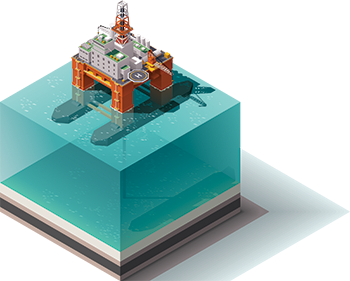 Have you ever considered how NASA plans and implements space missions?
Have you ever considered how NASA plans and implements space missions?
It's more than cramming people into a tin can and blasting them into space. Planning missions, such as an excursion to the International Space Station, begins up to 16 months before launch. Preparations include calculations for the crew, cargo, fuel, and destination.
While those preparations are taking place, NASA staff meet to problem solve.
Nobody has left the ground yet. What problems?
NASA works on solving problems before they happen. They don't determine a single solution, either. They plan on contingencies on contingencies. After all, once the crew is in space, nobody is helping them except themselves.
Working on eliminating failures isn't exclusively a NASA thing. There are a few other sectors working with the same model.
In manufacturing, maintenance, and other assembly processes, no other tool is as valuable as the Failure Mode and Effect Analysis (FMEA). FMEA offers a handy step-by-step tool assisting us in reviewing all the elements that constitute any given product, service, or process. Be its components, assembly lines, or any subsystems within it; FMEA registers all failures and their respective consequences in a specific worksheet for analysis.
What is Failure Mode and Effects Analysis?
In simple terms, it's a methodic process designed with the express purpose of identifying and fully understanding all the potential failures as well as the effects of those failures within any given product, service, or process. Part of the strength of this tool stems from the fact it needs to be done by a multidisciplinary team within an organization maximizing its effectiveness. A team applying this tool should include individuals from manufacturing, quality, maintenance, sales, marketing, customer service, and other key departments.
One of the many advantages of applying FMEA comes with assessing the level of risk associated with any given failure and then deciding on corrective action to fix that issue. Often, FMEAs are performed early, during the design or manufacturing phases of a product or service, with the idea of finding and correcting the weaknesses before a product or service gets into the customer's hands.
Another advantage comes from its adaptability since FMEA can also apply to other areas such as reliability engineering, maintenance engineering, safety engineering, and even quality engineering. The correct use of FMEA provides many benefits, such as improved reliability, topmost quality, effective delivery, and perhaps most important, reduced costs.
FMEA Origins
The first instance of FMEA use has been traced back to the United States military around the late 1940s. Failure rates for the manufacturing of munitions were too high for the military, so they developed a technique reducing the source of all failures. A few years later, NASA recognized FMEA's worth as a tool to potentially reduce the risks associated with projects and was successfully implemented in many NASA space missions.
 During the 1970s, the use of FMEA quickly spread among industries and organizations in the United States. NASA recommended the use of the FMEA to the U.S. Geological Survey in offshore petroleum exploration in 1971. In 1973, its use was extended into wastewater treatment plants, and it eventually moved into the food industry in general.
During the 1970s, the use of FMEA quickly spread among industries and organizations in the United States. NASA recommended the use of the FMEA to the U.S. Geological Survey in offshore petroleum exploration in 1971. In 1973, its use was extended into wastewater treatment plants, and it eventually moved into the food industry in general.
However, a significant early adopter around this time would come in the form of the automotive industry. Ford, in particular, implemented the use of the FMEA after many accidents and lawsuits involving the rashly developed Ford Pinto model. This led the company to reassess the way they designed and manufactured their vehicles. After Ford implemented FMEA, many other automotive manufacturers around the world followed after.
Eventually, the Automotive Industry Action Group (AIAG) would incorporate FMEA into a series of standardized practices for automotive production and supply chains in 1993. Even though it originally started as a tool for high-risk industries, FMEA eventually made its way into the design and manufacturing processes of other electronic products and everyday goods.
When to Use FMEA
As a rule, the following scenarios for any given product, service, or process can admit the use of an FMEA.
- During the design or redesign phases.
- When a new application or cycle comes up.
- If control plans are established for any given process.
- If improved goals are proposed.
- New regulations appear.
- To look at failures or problems indicated by customer feedback.
- Continually, during the entire lifespan of said product, service, or process.
FMEA Examples
Here are a couple of examples:
- A team gathers to produce a new toy for infants. They discuss materials, what the toy will be used for, how infants will play with it, and any associated risks. It's important to include all risks. For example, the infant could get cut if the edges are too sharp, what could happen if they fall while running with the toy, if the material is hazardous for the infant's health, etc. Once the end product is deemed safe and cost-effective, it is then green-lighted for manufacturing to begin.
- Let's say an automotive manufacturing plant looks at the seat belt installation process for any given vehicle model. After careful analysis, they determine a couple of potential failures in the process: bolts are not fully tightened, the trim cover clip is misaligned, and the workers sometimes select the wrong color seat belt. After assigning numbers, they notice the tools are not applying the correct pressure to the bolt tightening process, which could potentially lead to severe lawsuits in the future. Therefore, it is identified as a high-risk process and then deemed in need of improvement.
In Sum
Since its original implementation decades ago, the Failure Mode and Effects Analysis tool has generated impressive results. It's been a catalyst to boost teamwork in organizations, which in turn, has helped to improve competitiveness, increase user satisfaction, maximize profits, and reduce any potential negative impacts.
Needless to say that a correct implementation of FMEA is very much recommended; it brings forward a group of benefits that will undoubtedly have a positive impact on the many fronts of any organization.